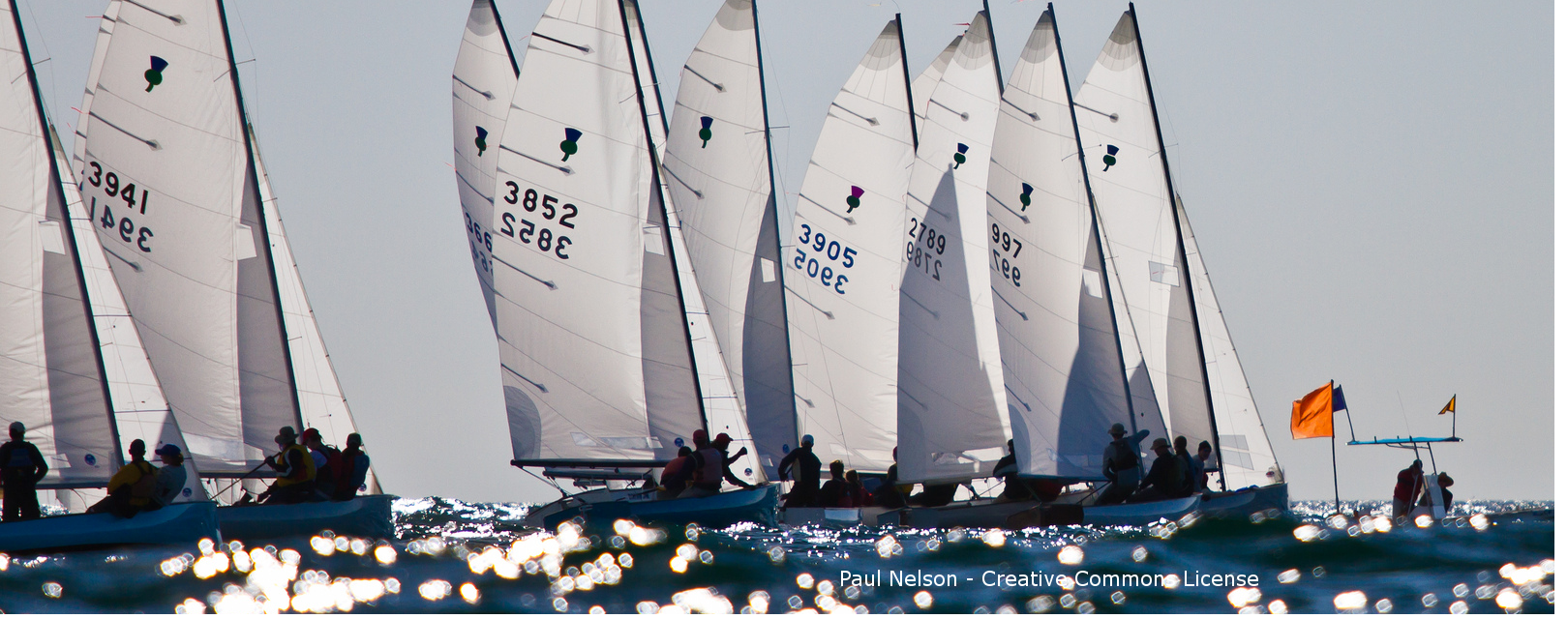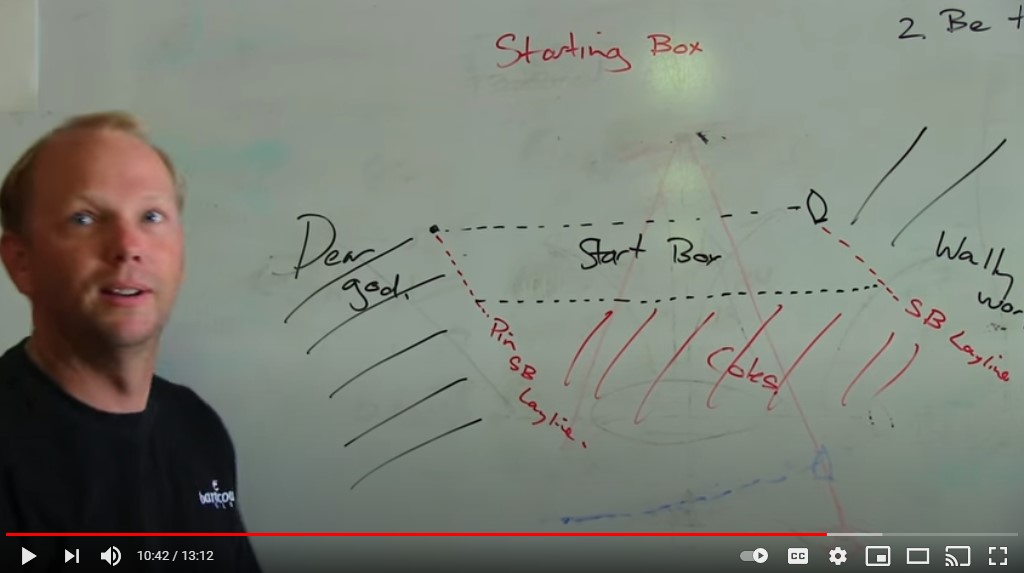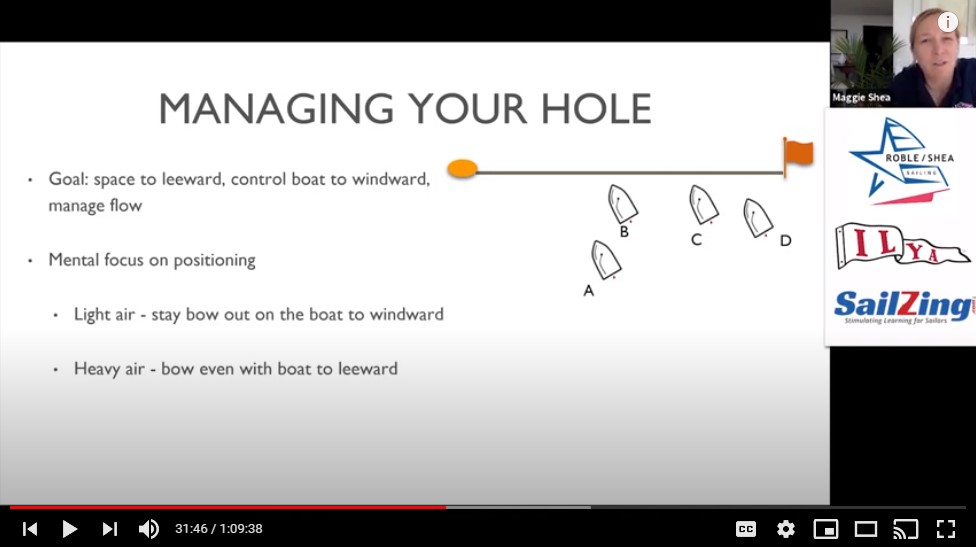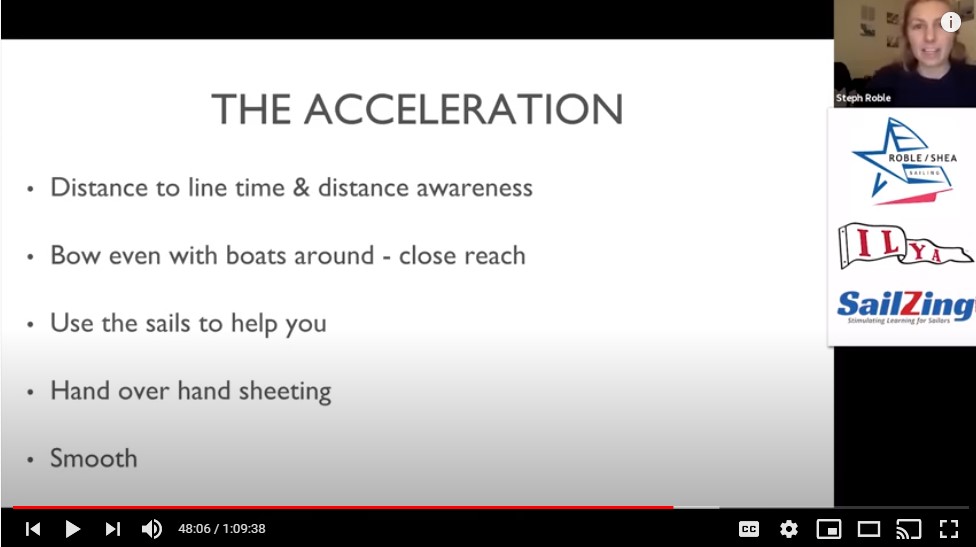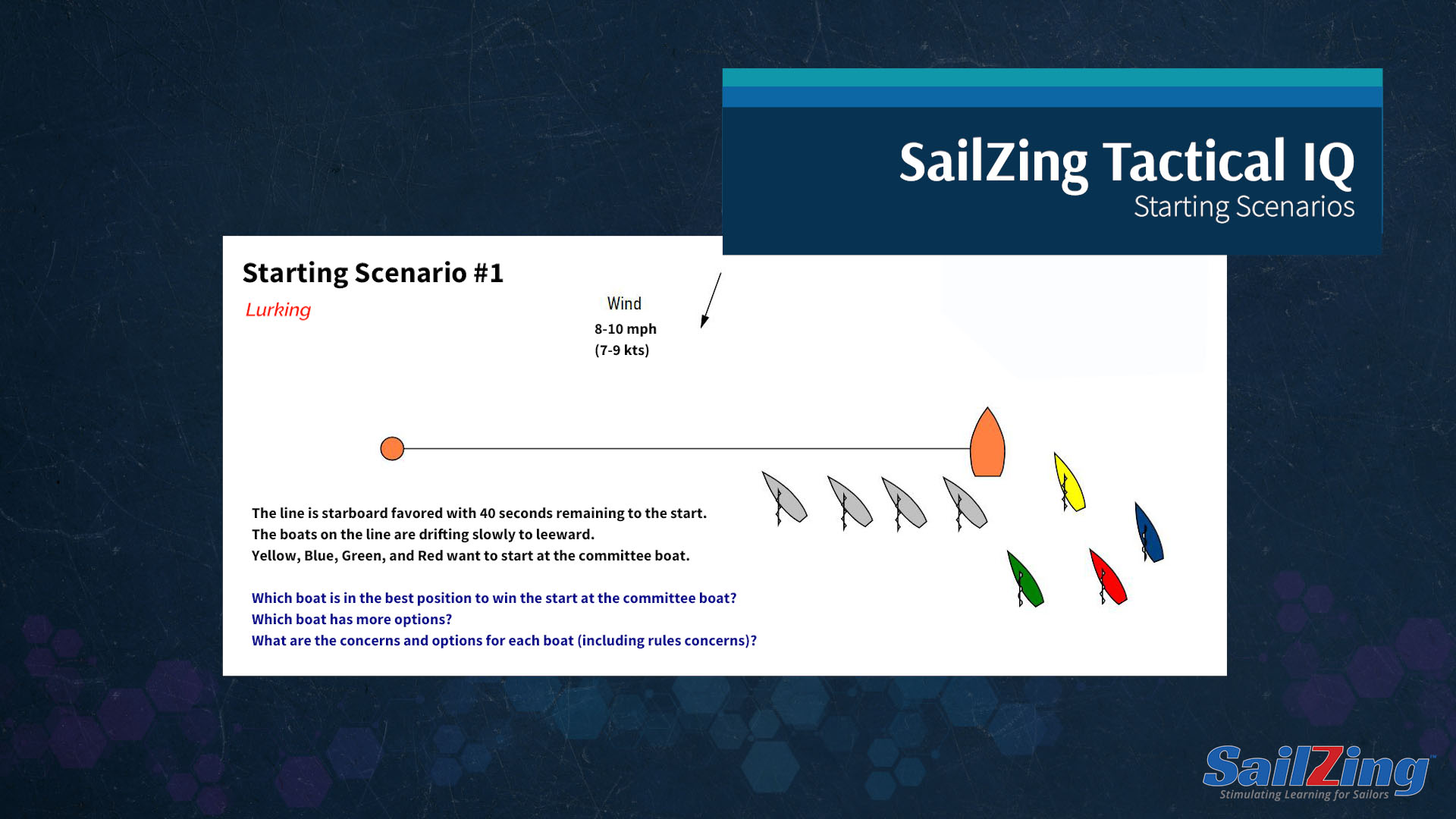You’ve done your pre-race routine, decided where to start, and made your starting line approach. Now it’s time to get aggressive and execute the start. Successful sailors use four key skills: they get to the front row, fight hard for a gap, manage distance to the line, and then charge the line at full speed. As a result, they punch out into clear air and leaving the hesitant behind.
This post has been updated from a previous post. We re-organized the material and added tips and video clips. Two of the video clips are from Roble-Shea Sailing, produced for the ILYA Fast Forward Seminars.
Four Skills to Execute the Start
To execute the start consistently, try to master four essential skills and the subskills that go with them.
- Get to the front row.
- Create and defend a gap to leeward.
- Manage distance to the line.
- Accelerate to full speed with clear air at the gun.
Front Row
Of the four skills, this is the easiest to achieve. As Peter Vaciurguis says: just be there. If you’re having trouble with this, check out this video, in which he urges you to stay within two boat lengths of the starting line during the last two minutes of the sequence. That way, you won’t be tempted to hang back until it’s too late.
Use a line sight to make sure you are near enough to the line. You may not always be able to use it in the last few seconds before the start, but you can at least use it in the last 30 seconds to 1 minute to make sure you are close enough.
Create and Defend a Gap to Leeward
- From either a port or starboard approach, slide in above a windward boat, below a leeward boat, or between two boats, with space to leeward.
- Keep working your boat to the right to maintain the gap. Here are the techniques:
- Shooting up. See our post and video on shooting up.
- Crabbing to windward. See this video from Erik Bowers on crabbing.
- Double tack. With a gap to windward, tack to port, fill the gap, then tack back.
- Note: to accomplish these techniques, you need to maintain flow over the foils to have steerage.
- Don’t take more space than you need; others will be tempted to steal the space.
- Watch behind you both to windward and leeward for attackers. React early.
- Stare at attackers or point your hand toward them so they know you see them and will defend.
- Ease sails and turn down to deter approaching boats.
- Sail into the gap if necessary – then shoot up to leeward of the attacker.
- In all these techniques, use the sails and body weight to help steer.
- Test your ability to spot problems with Roble-Shea’s video quiz on Boat Thoughts at 30 Seconds.
Manage Distance to the Line
If you get too close to the line, you may be ahead of other boats, but won’t have room to accelerate. If you’re too far back, other boats will gas you. To find the right balance:
- Get a good visual picture of the location of line.
- Use your line sight.
- Some sailors claim they can visualize a spot on the water at the line; they then glue their eyes on that spot.
- Know how much time and distance it takes to accelerate to full speed in various wind conditions.

- Stay with the other boats in the front row.
- If you are too close, you can hang back a little, but you must stay out of the wind shadow and blanket zone of the boats around you.
- During final acceleration, keep your mast at or ahead of the windward boat’s bow. This gases the windward boat, while keeping your sail numbers covered from the judges on the right.
- Try to keep your bow even with the leeward boat’s mast. This reduces the chance of being gassed. This might not be possible with a left end favor.
- Control your speed:
- Luff, back your sails, or make big steering motions to slow down.
- Boats with a jib can luff the jib and keep the main trimmed to slow down and minimize leeward drift.
Final Acceleration and Clear Air
Assuming you’re in the front row and have at least some gap, the last 5-10 seconds before the gun are the most important time in the race. You can either cross the line at speed with clear air, or be forced to consider a recovery. Watch this short clip from Roble/Shea Sailing on acceleration and review the points below.
- Have your controls, especially your vang, set up for the existing wind conditions. Remember that the wind tends to lift over the fleet at the starting line, so don’t depower too much.
- Start accelerating before boats around you if you have adequate distance to the line.
- At the latest, start accelerating when boats around you go. Listen for ratchets – don’t wait. If boats around you are over early, your individual risk of being called over is small.
- Accelerate on a close reach angle to the wind.
- Don’t sail lower than a close reach, or you will use up too much of your gap. Perfect sail trim is essential here – all sail telltales streaming.
- Sheet in gradually as you gain speed. If you sheet in too much without speed, you’ll sideslip.
- Use hand-over-hand sheeting to steer straight while sheeting in.
- Use the final bit of mainsail trim to help you head up to close-hauled, while minimizing steering.
- Depending on your boat type, you may be able to heel slightly to leeward before sheeting in and then flatten the boat as you sheet in the final bit.
Related Content:
Video – Accelerating a Laser – with Shirley Robertson
Video – Accelerating an FJ – Stanford Sailing
Accelerating an Opti – with Shirley Robertson – YouTube
Execute the Start: Practice Tips
You can practice every element of starting. Here are some ideas:
On your own
- Hold your boat within 5 feet of a buoy for several minutes, using rudder and sails.
- Accelerate repeatedly to full speed; try to improve your time and distance.
- Start a fixed distance away from a buoy and try to cross the buoy 20 seconds later at full speed.
- Sail slowly forward towards a buoy, luffing your sails, and see how slow you can go while maintaining control of your direction.
- Sail up to a buoy and stop abruptly, using your sails; then back up.
With a Group
- Set up a starting line with an observer on an end. Sail towards the line and raise your hand when you think you are on the line. The observer blows a whistle when you cross the line. More in Sailing Drills by Rick White.
- With several boats, set up a starting line too short for the number of boats. Run a 3 minute sequence and let the sailors fight for position. More in Sailing Drills by Rick White.
- Surprise starts. Helper blows start signal anytime during the final minute. More at Coaching Drills – Sail1Design Problem 4) or U.S. Sailing’s Sailing Drills Made Easy.
- Set up a starting box two boat lengths deep. Sailors must be inside the box for the final minute. More at Coaching Drills – Sail1Design Problem 1) or Sailing Drills Made Easy.
Sailors Helping Sailors
Will you share your knowledge with your related Comments below?

